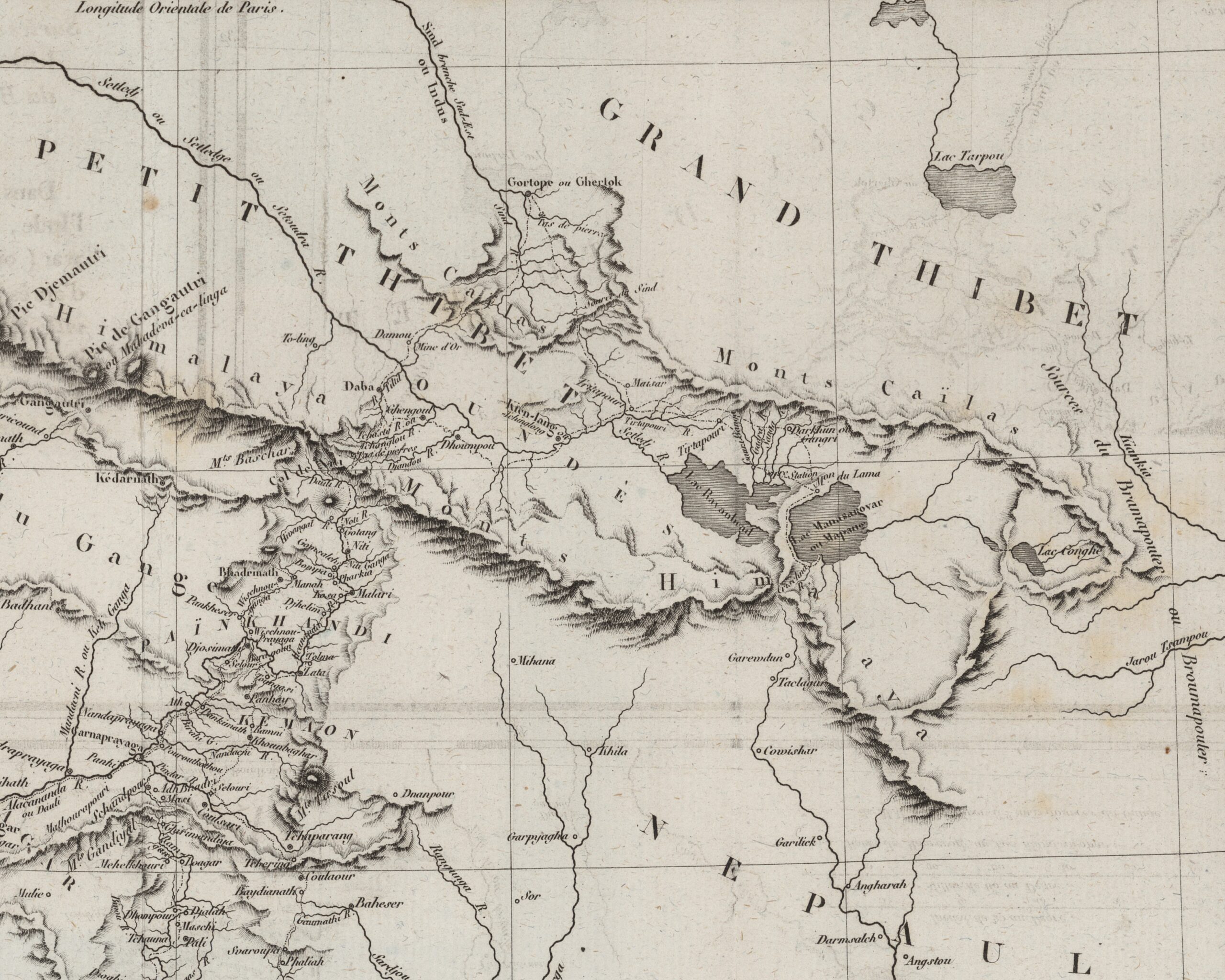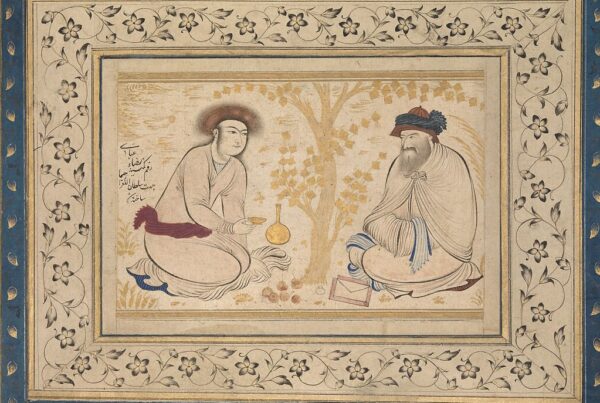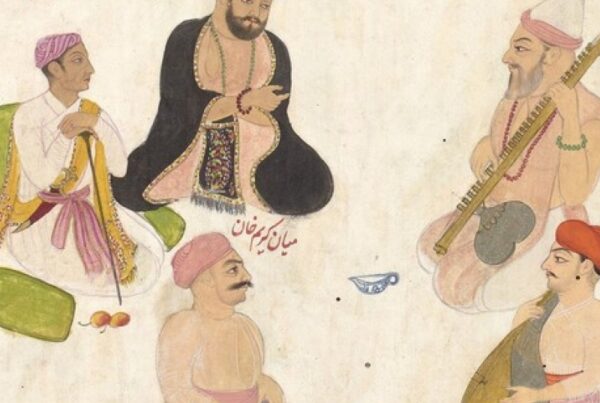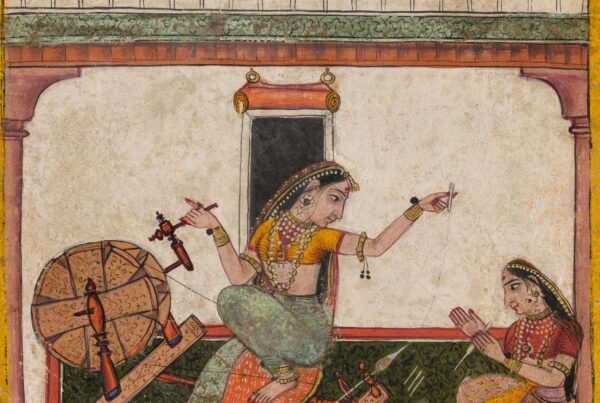Gyal Khatun was a Balti Queen, the daughter of the greatest figure in Balti history, King Gyalpo Ali Senge Anchen. She was married to the 17th century Ladakhi ruler Jamyang Namgyal. She is also known as Silima Khatun or “Untainted and Pure Queen” in Ladakhi and Balti folksongs. Although being Muslims, Gyal Khatun and her daughter-in-law Gyal Kelsang, also a Balti princess, are exalted as incarnations of Tibetan Buddhist Goddess Tara by the Ladakhi Buddhists.
A Royal Love Story
Jamyang Namgyal, the ruler of Ladakh during his reign decided to support the Sultan of Chigtan and capture Skardu, the Makpon Kingdom. Namgyal’s army was crossing the mountain passes towards Purig during the winter season where his troops disappeared due to a violent storm. Ali Senge Khan Anchan’s well-trained army attacked Namgyal’s army on the way and held them there until all the mountain passes and valleys were blocked with snow; compelling Namgyal to surrender.
Ali Senge Khan imprisoned Namgyal in Skardo and attacked and took control over the Kingdom of Ladakh and expanded the Makpon Kingdom. According to the local Balti traditions and the Royal chronicles of Ladakh while Namgyal was in prison he fell in love with Ali Senge’s daughter Gyal Khatun and both the princess and the king exchanged vows of marriage and she became pregnant. When her father Ali Senge examined and “seeing the damage that had been done, asked Namgyal to marry her and allowed him to return to Ladakh with his nobles.” Namgyal pledged his loyalty to Ali Senge Anchan.
Ali Sher Khan released the Ladakhi king Jamyang but not before giving his daughter, Gyal Khatun, as his bride with the stipulation that her son must inherit the Ladakhi throne. Following this mandate, Jamyang’s two sons with his first wife, Queen Tsering, were ispo facto banned from royal succession and were sent off to Central Tibet.
Gyal Khatuns Dowry and Wedding traditions
The Kings of Baltistan were renowned for their extravagant and generous dowries, which typically took the form of both movable and immovable property. The movable property included gold, silver, precious stone, jewellery, expensive clothing, swords, guns, and 12 sets of kitchen utensils. Evidence of the princess’s movable dowry is still on display at the Stok Palace Museum, which houses the Queen’s stomacher, a necklace made of thirteen rows of silver beads. When it comes to immovable property, a village or villages are offered as dowry. According to traditions, a large contingent of Muslim maids, a large number of male servents, and a group of Balti musicians (whose status was eventually elevated to Kharmon or Royal Musicians) were transported to Ladakh with Gyal Khatun’s marriage party.
According to Balti customs, King Jamyang might have been required to pay bride-price to his Balti overlords. In this case, “khamitat (Balti: ཁམི་ཏཏ་)” would be involved, in which the boy’s parents send gifts to the girl’s parents.” After khamitat, the boy’s parents should adhere to the tradition of “rintho,” or “onarin,” which denotes the payment of the cost of the milk that the girl was fed during her nursing stage. After receiving the payment of 24 tolas of gold and 24 goats, the wedding date is regarded as fixed. The Ladakhi Lamas welcomed the Queen as an emanation of the Buddhist divinity of long life, the White Tara.
Gyal Becomes Queen
After the death of King Jamyang Namgyal, Gyal Khatun assumed the reins of the government during the interregnum, acting on behalf of her underage son, Sengge Namgyal. She is renowned for giving birth to Sengge Namgyal, known as the Lion King of Ladakh (c. 1570–1642). A famous ballad narrates the birth of Sengge Namgyal, the grandson of Ali Senge Anchan’s grandson in the arms of his mother Gyal Khatun, also known as Zi-Zi:
“Today the old king’s name shall resound through the verse, for see the lovely babe his grandson, born today. see him in the arms of his mother, this child whose name shall be famous all the world, see him in the arms of Zi-Zi, the Queen. This child whose name shall be famous in all the world.”
In Ladakh, Gyal Khatun is regarded as a royal patron of mosques and Buddhist temples. Sengge Namgyal completed the previous work undergoing in the Maitreya temple under the patronage of his mother, Gyal Khatun. Gyal Khatun is considered the patron of Chamba Lakhang; she also donated the ornaments for Maitreya’s image in the second temple, Serzang Lakhang. Sengge Namgyal, the son of Gyal Khatun, constructed the original Kache mosque in Leh as a memorial to his mother.
However, new structures were built inside the preexisting mosque as part of a militaristic alliance with the Mughal emperor Aurangzeb. Gyal Khatun is credited with building several small mosques in Shey, Leh, and Nubra. She frequently receives praise in Ladakhi folk songs as Silima Khatun, “The untainted and Pure Queen,” due to her high regard among the Ladakhi people. “The Song of Silima Khatun” is a Ladakhi folksong praising the Queen:
The Song of Silima Khatun:
“My famous queen is like the rising sun,
The precious Silima Queen is brilliant like a vision of light.
My famous queen is like the Shining full moon
To he lee [utterance to fill the rhythm]
My precious Silima queen you are brilliant like a vision of light,
Even your royal line is god-like, brilliant like a vision of light.
Silima Khatun your royal line is the line of sugar-cane wood,
Precious Silima Queen your race may flourish like leaves.
Your name and qualities have become known all over the world [alam, Arabic word for world]
Oh precious Silima Khatun Queen, brilliant like a vision of light.”
Gyal Khatun is also renowned for establishing the Gelug-pa order of Tibetan Buddhism in Ladakh by enshrining a Tsongkhapa sculpture in Basgo Temple (also known as Kalzand Drolma Temple). The Royal Chronicle of Ladakh (La-dvags-rgyal-rabs) contains all of this information.
Gyal Khatun, a model of secular behaviour, is well-known for her inclusive support of Muslim and Buddhist places of worship in Ladakh. Her imperial entry into the Namgyal fold ushered in a time of harmony and peace between the rival kingdoms. Even after the passing of King Jamyang Namgyal, Gyal Khatun established her rule over the diplomatic and religious missions in Ladakh. The Queen promoted Mahayana and Tantric Buddhism and built Islamic architecture as a patron of religious architecture.
Gyal Khatun is also credited for introducing Balti music and the two fundamental instruments of Ladakhi music Daman (Drums) and Surna (Oboe) in Ladakh from Baltistan, which she brought as her dowry. They are paired up to champion the beats and melody, the two important aspects of any musical composition. Traditional sport of Polo (Balti: པོ་ལོ་) was introduced in Ladakh from Baltistan by Gyal Khatun as well. Namgyal kings had private mosques constructed in Leh and Shey for Gyal Khatun and her servants while she continued to practise Islam until her death.
Ali Senge Anchans Dream
Gyal Khatun’s life is intertwined with mystical and divine elements that further elevate her significance. In his influential work “Antiquities of Indian Tibet,” A. H. Francke recounts a significant event involving the Balti king, Ali Senge Anchan, Gyal Khatun’s father. According to the royal records, Ali Senge had a dream in which he saw a lion emerging from the river near the castle and vanishing into the body of his daughter, Gyal Khatun. In the royal accounts, Gyal Khatun is exalted as an incarnation of the Buddhist Goddess Tara or “gdrolma”, a saviour and a manifestation of compassion.
Francke’s translation of a verse from the original manuscript reads as follows: “Yesterday in a dream, I saw a lion [emerging] from the river in front [of the castle]; And, jumping at Rgyal-Kha-thun, he disappeared into her body, At the same time also, That girl conceived. Now it is certain that she will give birth to a male child, Whose name ye shall call Sen-ge-rnam-gyal!” This mystical event further solidifies Gyal Khatun’s revered status as an extraordinary figure in the region’s history. Gyal Khatun’s legacy extends beyond her royal duties, as her divine connection shaped the course of events and influenced her family’s fate, including the rise of her son, Sengge Namgyal, as the celebrated Lion King of Ladakh.
Written By Nyima Skarchen




